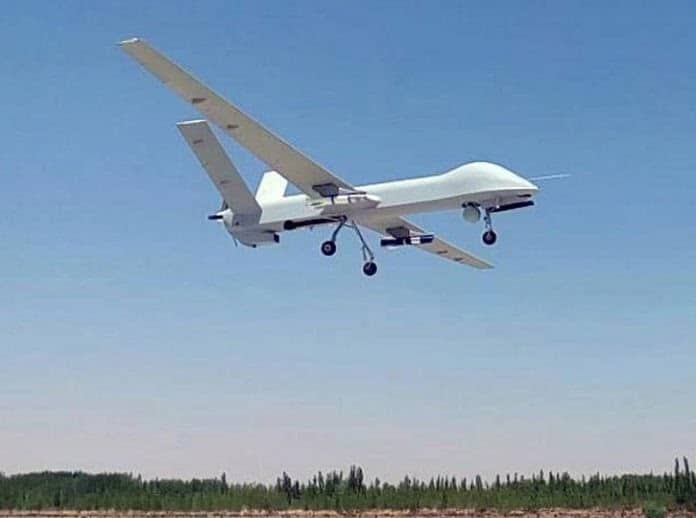The Congolese government is taking decisive action in its fight against the M23 rebels by acquiring nine Chinese CH-4 attack drones. This move marks a significant step towards enhancing the capabilities of the Congolese military in tackling the ongoing insurgency.
In February 2023, the DRC government announced that it had ordered nine CH-4 combat drones from China. The CH-4 is a medium-altitude, long-endurance (MALE) unmanned aerial vehicle (UAV) that is capable of carrying a variety of weapons, including air-to-surface missiles and bombs.
The CH-4 combat drone is a medium-altitude, long-endurance unmanned aerial vehicle (UAV) that has the capacity to carry various weapons, including air-to-surface missiles and bombs. The first shipment of three drones has already been delivered, while the remaining six are expected to arrive later this year. These drones will be stationed at the South Kavumu military airport, strategically located within range of the conflict zone.
There are two versions, the CH-4A and CH-4B. The CH-4A is a reconnaissance drone (capable of a 3500–5000 km range and a 30- to 40-hour endurance) while the CH-4B is a mixed attack and reconnaissance system with provisions for 6 weapons and a payload of up to 250 to 345 kg. The DR Congo Government likely procured the CH-4B variant.
The first three CH-4 drones were delivered to the DRC in May 2023. The remaining six drones are expected to be delivered by the end of the year. The DRC government has said that it plans to use the CH-4 drones to fight the M23 rebel group, which has been active in eastern DRC since 2012.
The DRC’s army is fighting in the restive east where ethnic militias and other armed groups are battling for control near the borders with Uganda and Rwanda. According the United Nations, there are at least 120 armed groups in the DRC’s restive east.
The acquisition of Chinese-made CH-4 drones by the Congolese government is not an isolated event. Several African countries, such as Nigeria, Morocco, Egypt, Algeria, and Ethiopia, have also chosen to import and utilize Chinese military drones to strengthen their defense capabilities. Nigeria, in particular, was among the first African nations to purchase Chinese CH-3 drones for counterinsurgency operations.
China’s growing influence in the global combat drone market can be attributed, in part, to a significant state-funded program aimed at modernizing and upgrading its armed forces. The Chinese-made Caihong 4 drone, often compared to the U.S.-manufactured MQ-9 Reaper, has become one of China’s bestselling drones. Similarly, the Wing Loong 2, another popular Chinese drone, shares similarities with the U.S.-built MQ-1 Predator.
One of the main factors driving the increasing interest in Chinese military drones is the restrictive export controls imposed by the United States. The Missile Technology Control Regime, established in 1987 to prevent the proliferation of platforms capable of delivering weapons of mass destruction, limits the United States’ ability to sell its combat drones to other countries. This limitation has created an opportunity for China to fill the void, as its drones are not subject to the same export restrictions.
Chinese drones offer a more cost-effective alternative to their American counterparts in the same category. The affordability of Chinese drones, combined with the less stringent conditions attached to their purchase, makes them an attractive option for countries seeking to bolster their defense capabilities.
While the acquisition of Chinese CH-4 drones by the Congolese government represents a significant development in the fight against the M23 rebels, it is important to consider the potential implications of employing such technology. The use of armed drones raises concerns about civilian casualties, adherence to international humanitarian law, and the potential for human rights abuses.
The purchase of Chinese CH-4 attack drones by the Congolese government signals a proactive approach in addressing the ongoing conflict with the M23 rebels. The acquisition of these drones aligns with a broader trend in Africa, where countries are turning to Chinese military drones as a viable and cost-effective option to bolster their defense capabilities.
Besides drones, the Democratic Republic of Congo has acquired the Mwari light attack and surveillance aircraft designed by Paramount. The Mwari is a twin-turboprop aircraft that is used for a variety of missions, including surveillance, reconnaissance, and light attack.


